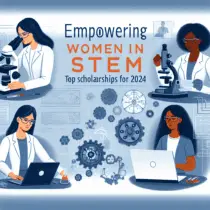Scholarship essays can make or break your application process. They provide a unique opportunity to showcase your personality, achievements, and aspirations to the selection committee. A well-crafted essay can set you apart from other candidates, highlighting why you deserve the scholarship. This comprehensive guide will walk you through the process of writing a winning scholarship essay, from brainstorming to final edits, with tips and examples to help you along the way.
Understanding the Purpose of a Scholarship Essay
Before you begin writing, it’s essential to understand the purpose of a scholarship essay. These essays are designed to give insight into who you are beyond your grades and test scores. They allow the scholarship committee to learn about your background, experiences, goals, and what drives you. A compelling essay can demonstrate your commitment to your chosen field, your passion for learning, and your potential to make a positive impact.
Step-by-Step Guide to Writing a Scholarship Essay
1. Read and Understand the Prompt
The first step in writing a scholarship essay is to thoroughly read and understand the essay prompt. Each scholarship will have its own set of instructions and criteria. Pay close attention to:
- The specific question or topic
- Word count or page limit
- Formatting requirements
- Submission deadlines
Understanding these details ensures that your essay meets the scholarship’s requirements and stays on topic.
2. Brainstorm Ideas
Once you understand the prompt, spend some time brainstorming ideas. Reflect on your life experiences, achievements, challenges, and goals. Consider the following questions:
- What personal experiences have shaped who you are today?
- What are your academic and career goals?
- How have you contributed to your community?
- What obstacles have you overcome, and how did you handle them?
- Why do you deserve this scholarship?
Jot down your thoughts and ideas, and look for themes or stories that align with the essay prompt.
3. Create an Outline
An outline helps organize your thoughts and ensures your essay flows logically. A typical scholarship essay structure includes:
- Introduction: Grab the reader’s attention with a compelling hook and introduce the main theme of your essay.
- Body Paragraphs: Develop your key points with specific examples and experiences. Each paragraph should focus on a single idea.
- Conclusion: Summarize your main points and reiterate why you deserve the scholarship. End with a strong closing statement.
4. Write a Strong Introduction
Your introduction sets the tone for your essay and should engage the reader from the start. Begin with a hook that captures attention, such as a quote, question, or personal anecdote. Clearly state the main theme or purpose of your essay and provide a brief overview of what you will discuss.
Example: “As I stood in front of my peers, heart pounding and palms sweating, I realized that this moment was a culmination of years of perseverance and dedication. Public speaking had always been my greatest fear, but through relentless practice and determination, I transformed it into my greatest strength.”
5. Develop the Body Paragraphs
The body paragraphs are where you expand on your key points and provide supporting evidence. Use specific examples and personal experiences to illustrate your points. Be honest and authentic, and show how these experiences have shaped your character and goals.
a. Focus on Your Achievements and Experiences
Highlight your academic achievements, extracurricular activities, volunteer work, and any other experiences that demonstrate your commitment and potential. Explain how these experiences have prepared you for your future goals.
Example: “During my junior year of high school, I founded a community tutoring program to help underprivileged students improve their reading and math skills. This experience not only allowed me to make a tangible impact on my community but also ignited my passion for education and social justice. Through this program, I developed leadership skills, learned to manage a team, and saw firsthand the transformative power of education.”
b. Address Challenges and How You Overcame Them
Discuss any obstacles or challenges you have faced and how you overcame them. This shows resilience and determination, qualities that scholarship committees value.
Example: “Growing up in a single-parent household, financial constraints were a constant challenge. Despite these hardships, I remained committed to my education, often balancing multiple part-time jobs while maintaining a high GPA. These experiences taught me the value of hard work, perseverance, and the importance of education as a pathway to a better future.”
c. Connect Your Goals to the Scholarship
Explain how receiving the scholarship will help you achieve your academic and career goals. Be specific about how the financial support will make a difference in your life and how you plan to use your education to give back to your community or field.
Example: “Receiving this scholarship will enable me to attend XYZ University, where I plan to major in Environmental Science. With a degree from this esteemed institution, I aim to work on sustainable development projects that address climate change and promote environmental conservation. This scholarship will not only alleviate my financial burden but also empower me to make a meaningful impact on our planet.”
6. Write a Compelling Conclusion
Your conclusion should tie together the main points of your essay and leave a lasting impression on the reader. Summarize your key arguments, reiterate why you deserve the scholarship, and end with a strong closing statement.
Example: “In conclusion, my journey has been marked by resilience, determination, and a passion for making a positive impact. This scholarship will provide me with the resources and opportunities to further my education and pursue my dreams. I am committed to using my skills and knowledge to create a brighter future for my community and beyond.”
7. Revise and Edit
Once you have written your first draft, take the time to revise and edit your essay. Look for areas where you can improve clarity, coherence, and flow. Check for grammatical errors, typos, and formatting issues. Reading your essay aloud can help you catch mistakes and ensure it sounds natural.
8. Seek Feedback
Before submitting your essay, seek feedback from teachers, mentors, or peers. They can provide valuable insights and suggestions for improvement. Be open to constructive criticism and use it to refine your essay.
9. Finalize Your Essay
After incorporating feedback and making necessary revisions, finalize your essay. Ensure it meets all the requirements of the scholarship, including word count, formatting, and submission guidelines. Double-check for any remaining errors and make sure your essay is polished and professional.
10. Submit Your Application
Submit your scholarship application before the deadline. Keep a copy of your essay and any other required documents for your records. After submitting, take a moment to reflect on your hard work and dedication, and be proud of your accomplishment.
Additional Tips for Writing a Winning Scholarship Essay
- Be Yourself: Authenticity is key. Write in your own voice and share your true experiences and aspirations.
- Stay Focused: Stick to the prompt and avoid going off on tangents. Make sure every paragraph contributes to the overall theme of your essay.
- Show, Don’t Tell: Use specific examples and anecdotes to illustrate your points. This makes your essay more engaging and memorable.
- Be Positive: Even when discussing challenges, focus on the positive outcomes and what you learned from the experience.
- Be Clear and Concise: Avoid unnecessary jargon and complex language. Aim for clarity and simplicity.
- Proofread: Careless mistakes can detract from an otherwise excellent essay. Proofread multiple times and consider using tools like Grammarly for additional checks.
- Start Early: Give yourself plenty of time to brainstorm, write, revise, and seek feedback. Rushed essays are rarely successful.
Examples of Winning Scholarship Essays
Example 1: Overcoming Adversity
Prompt: Describe a significant challenge you faced and how you overcame it.
Essay: “Growing up in a single-parent household, financial constraints were a constant challenge. My mother worked multiple jobs to support my siblings and me, often leaving me to shoulder additional responsibilities at home. Despite these hardships, I remained committed to my education, often balancing multiple part-time jobs while maintaining a high GPA. These experiences taught me the value of hard work, perseverance, and the importance of education as a pathway to a better future.
In high school, I joined the debate team, which became a turning point in my life. The rigorous training and competitions honed my critical thinking and public speaking skills. Despite initial setbacks, I pushed myself to improve, eventually leading our team to victory at the state championships. This achievement not only boosted my confidence but also reinforced my belief that with determination and support, I could overcome any obstacle.
Receiving this scholarship will enable me to attend XYZ University, where I plan to major in Political Science. With a degree from this esteemed institution, I aim to work on policy development that addresses social inequalities and advocates for underrepresented communities. This scholarship will not only alleviate my financial burden but also empower me to make a meaningful impact on society.”
Example 2: Passion for a Field
Prompt: Explain why you are passionate about your chosen field of study.
Essay: “From a young age, I was captivated by the wonders of the natural world. I spent countless hours exploring the woods behind my house, collecting leaves, observing insects, and cataloging my findings in a makeshift journal. This childhood curiosity evolved into a deep passion for environmental science.
In high school, I took every science course available, eagerly absorbing knowledge about ecosystems, climate change, and conservation efforts. I joined the Environmental Club, where I led initiatives to reduce our school’s carbon footprint and organized community clean-up events. These experiences solidified my commitment to protecting our planet.
One of the most impactful moments of my journey was attending a summer internship at a local wildlife sanctuary. There, I worked alongside dedicated conservationists, learning about habitat restoration and species preservation. The hands-on experience was both challenging and rewarding, and it deepened my resolve to pursue a career in environmental science.
Receiving this scholarship will allow me to attend ABC University, where I plan to major in Environmental Science. With a degree from this program, I aspire to work on sustainable development projects that address climate change and promote environmental conservation. This scholarship will provide the financial support I need to achieve my goals and contribute to the preservation of our planet for future generations.”
Conclusion
Writing a winning scholarship essay requires careful planning, thoughtful reflection, and meticulous editing. By understanding the purpose of the essay, brainstorming ideas, creating a structured outline, and focusing on authenticity, you can craft a compelling narrative that captures the attention of the selection committee. Remember to seek feedback, revise diligently, and adhere to all application requirements.
With dedication and effort, your scholarship essay can become a powerful tool in securing the financial support you need to achieve your academic and career goals. Good luck!





